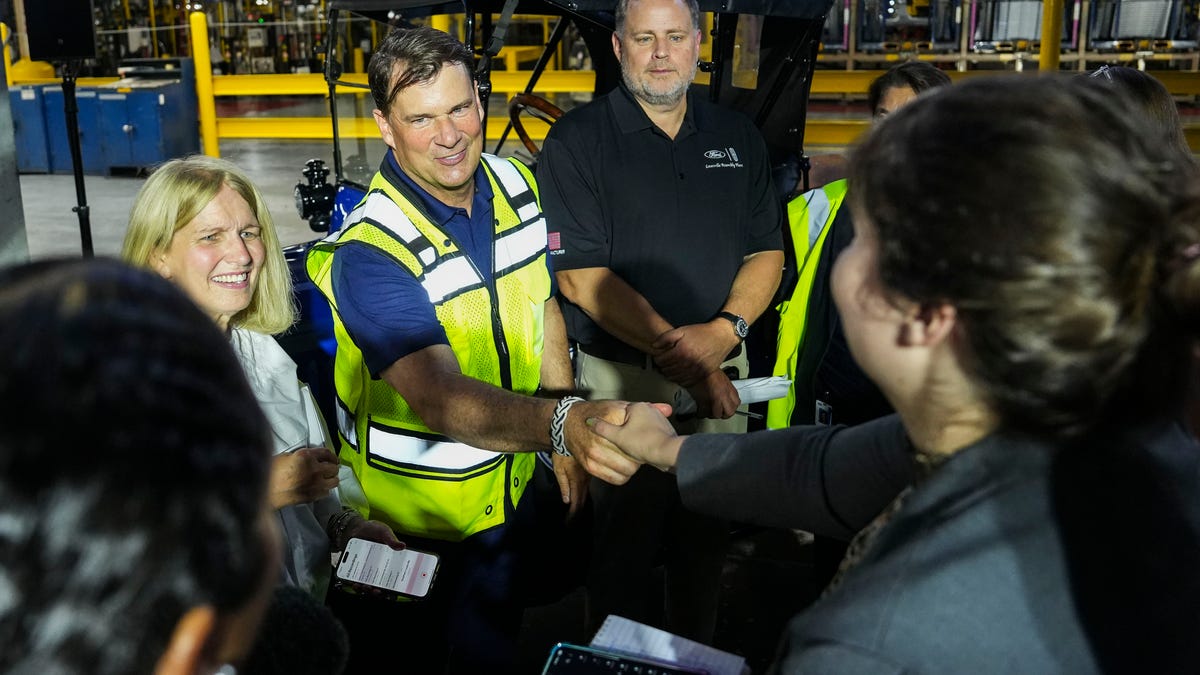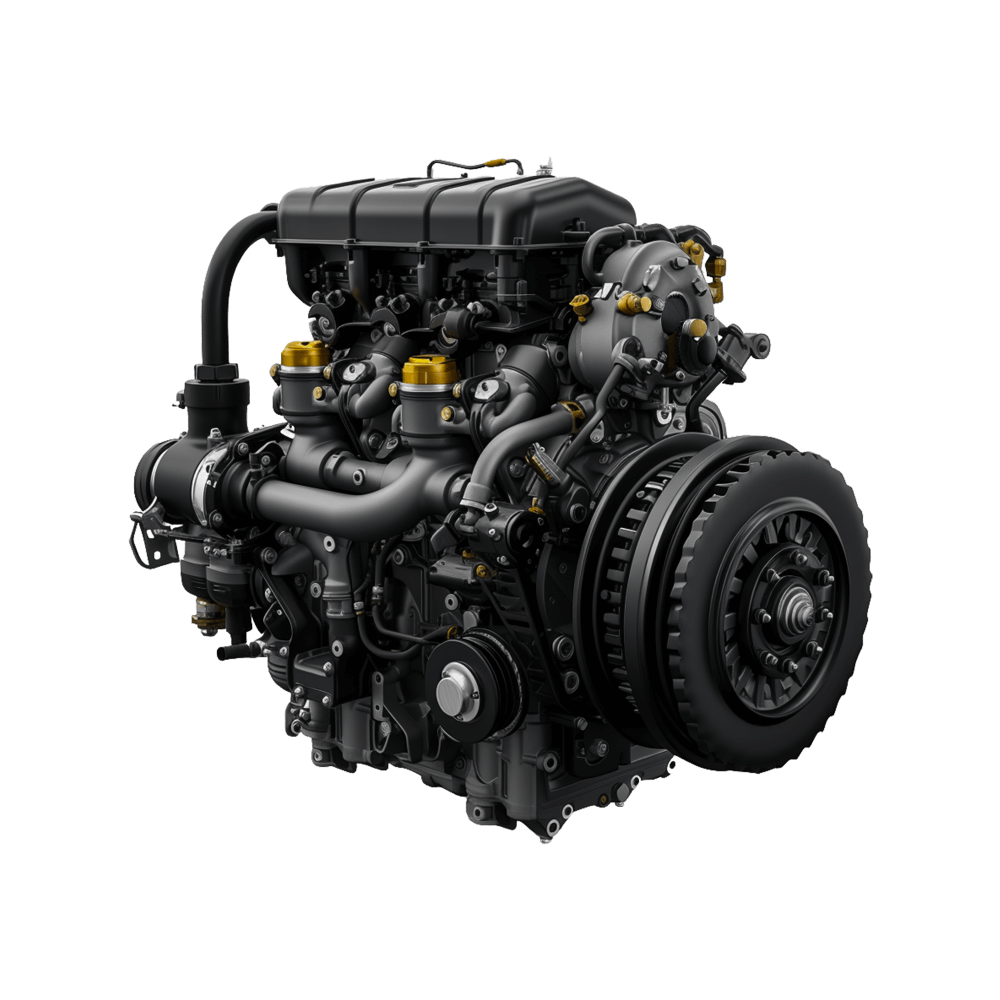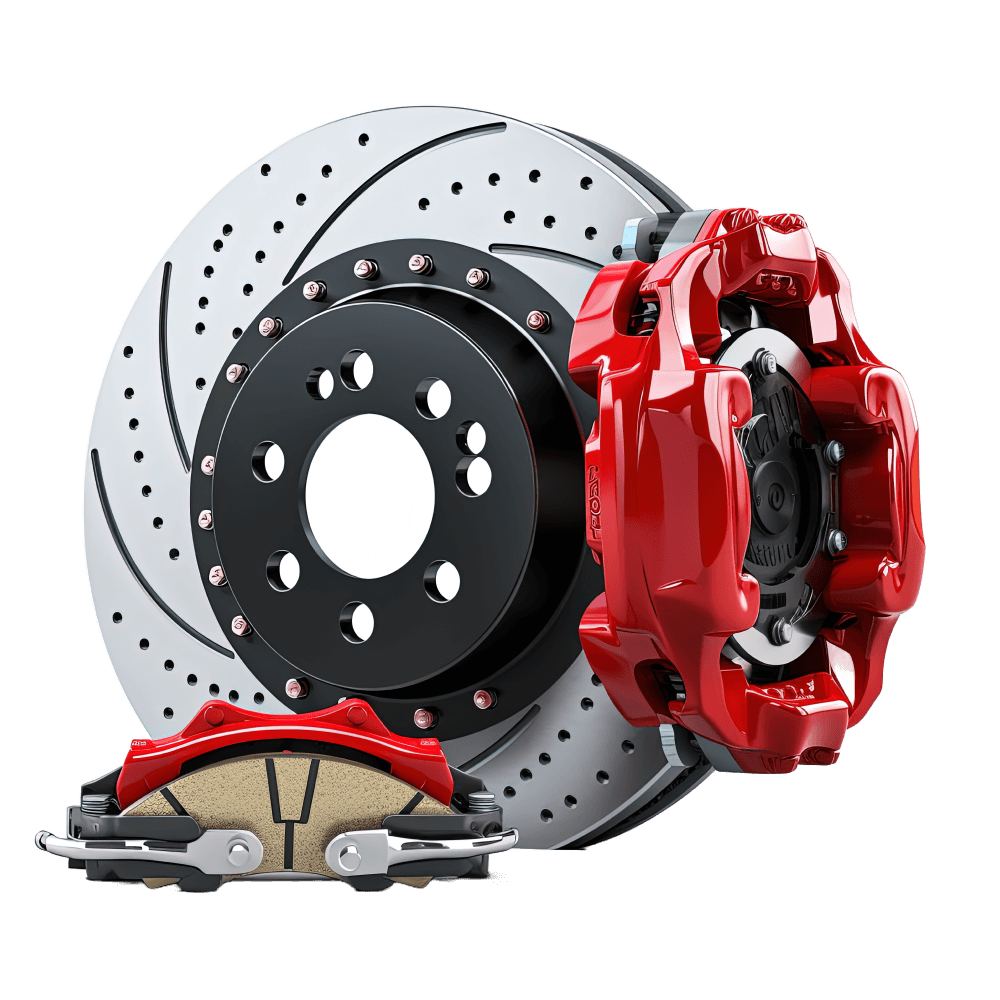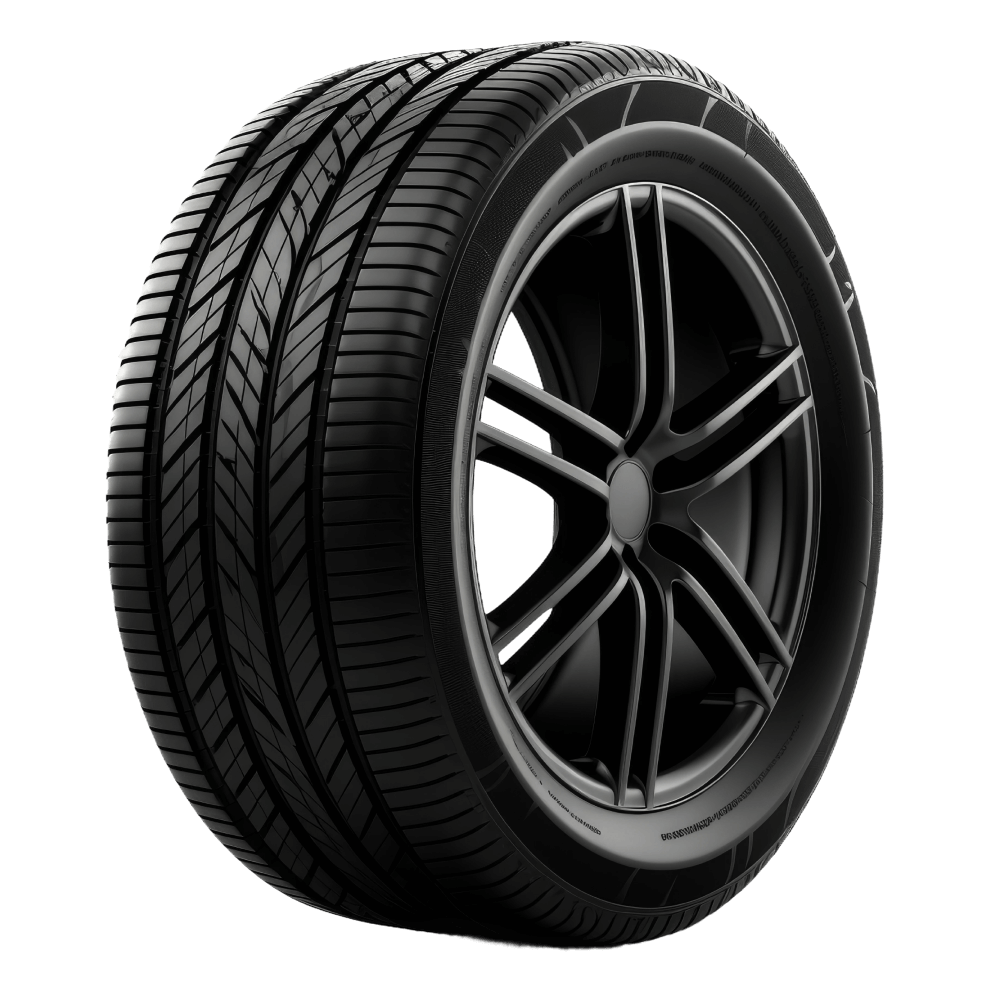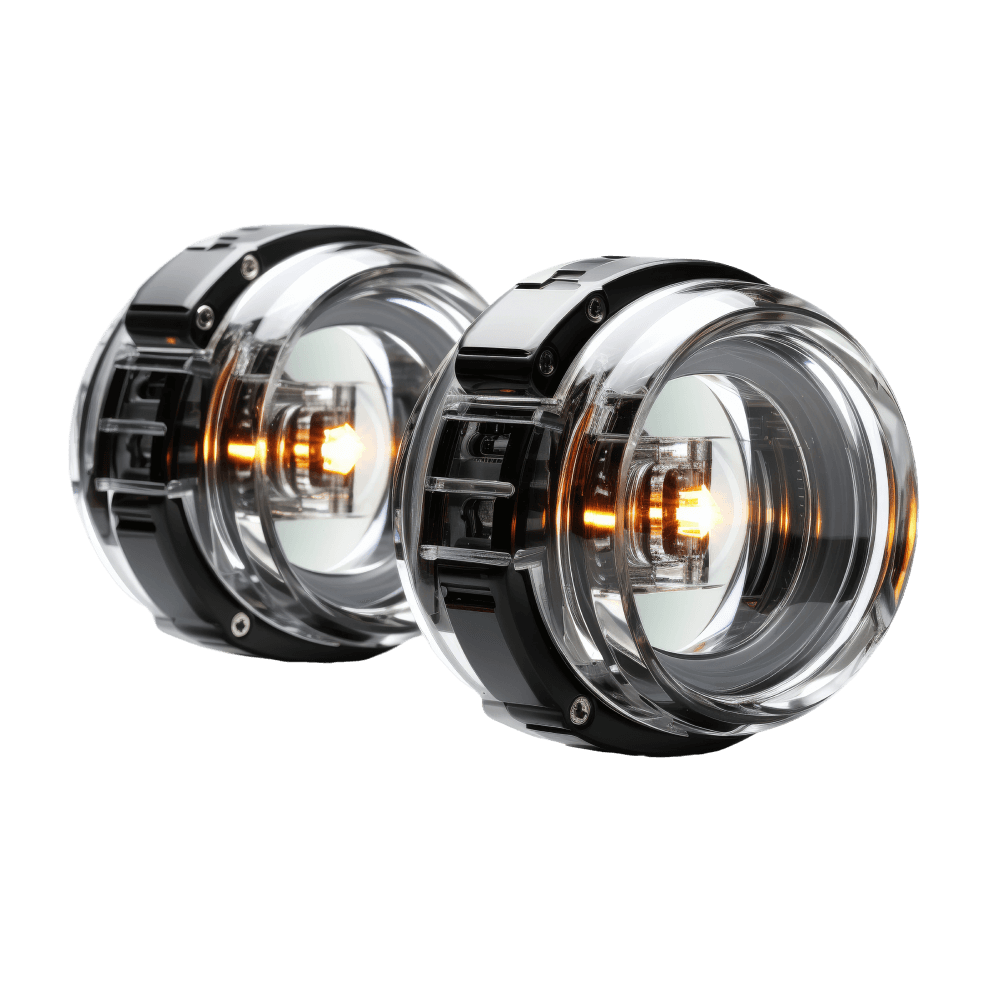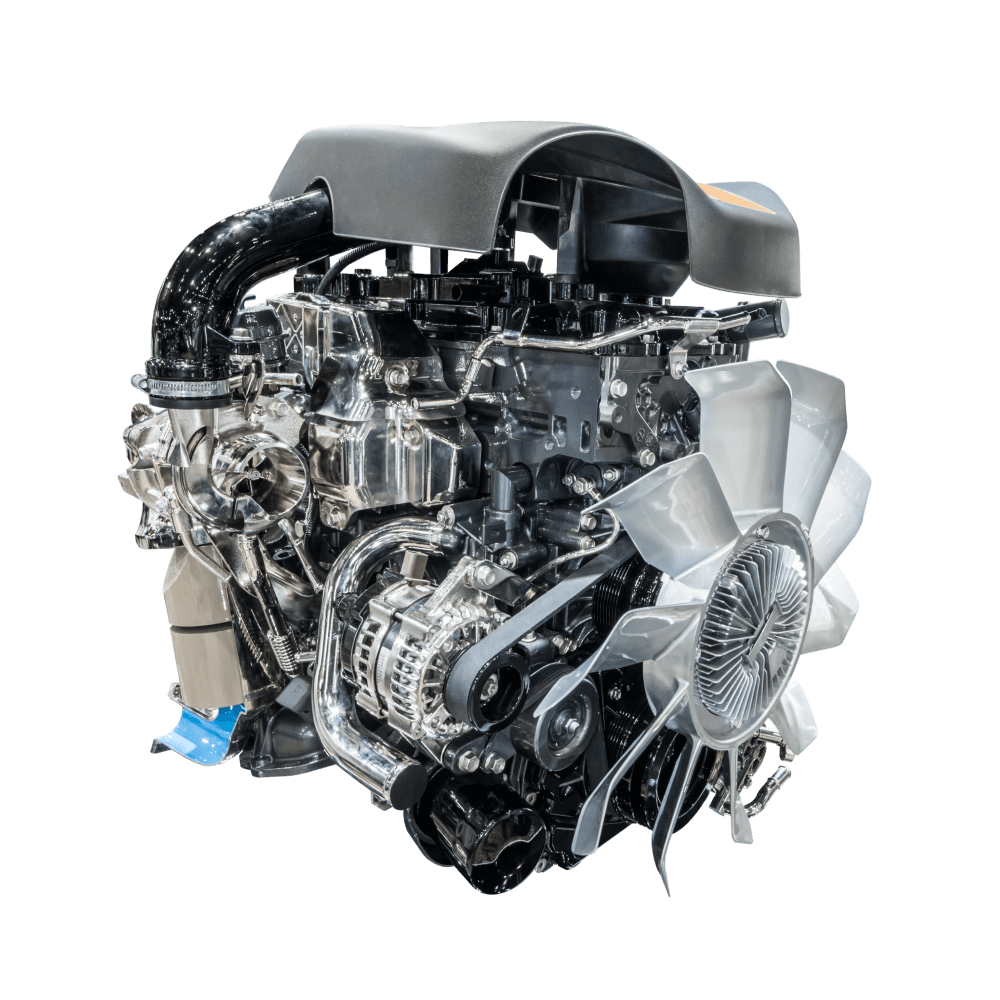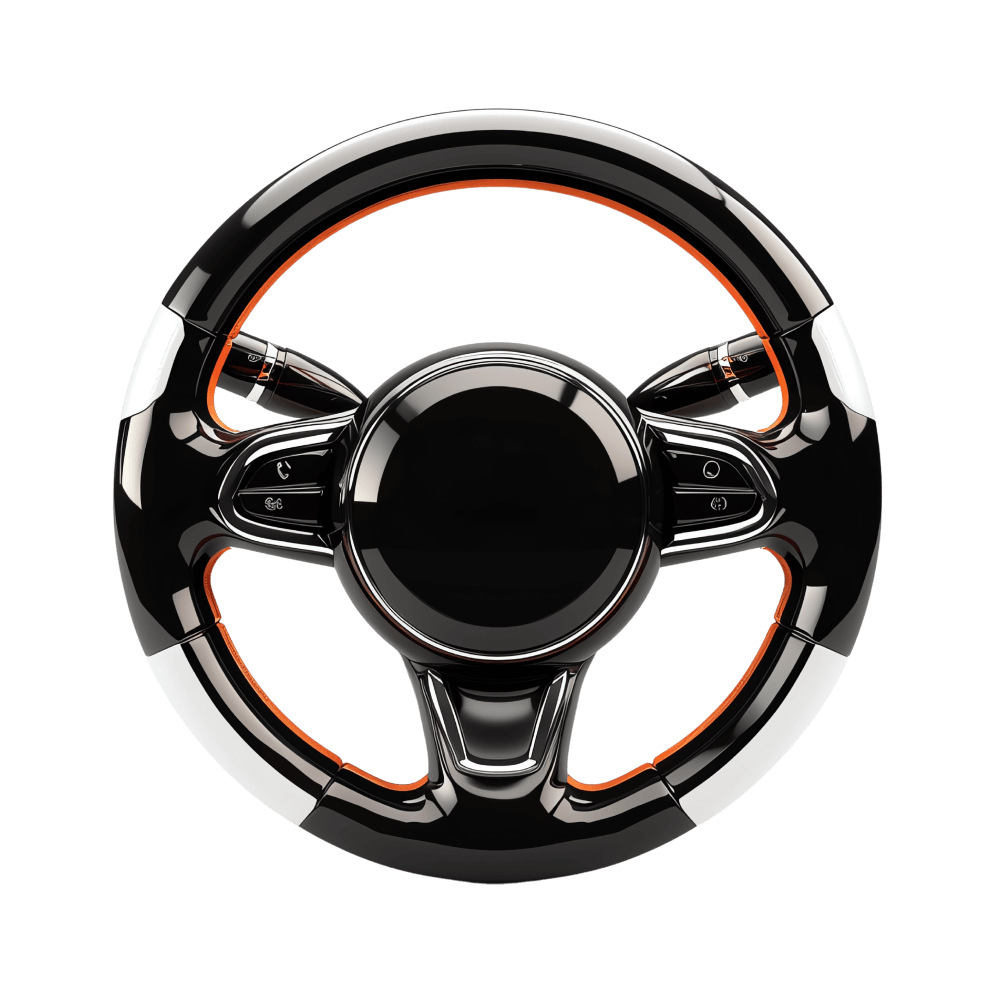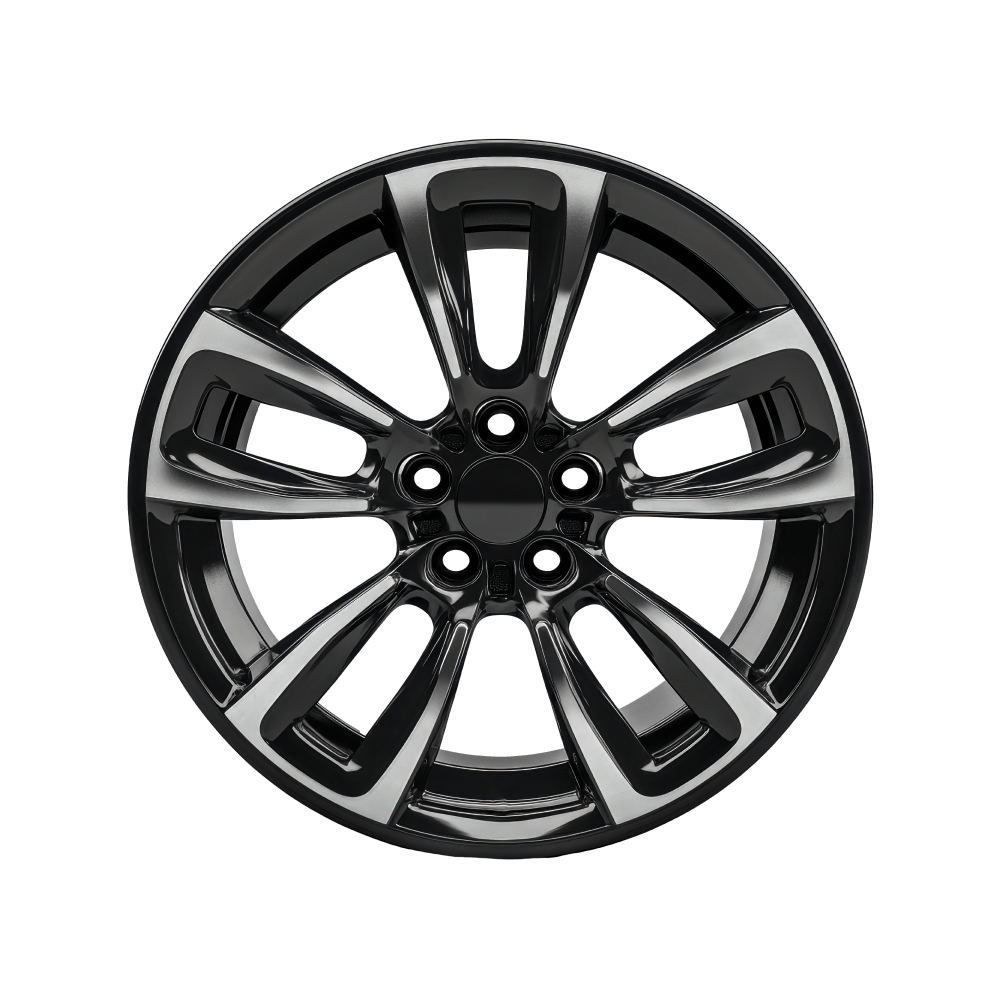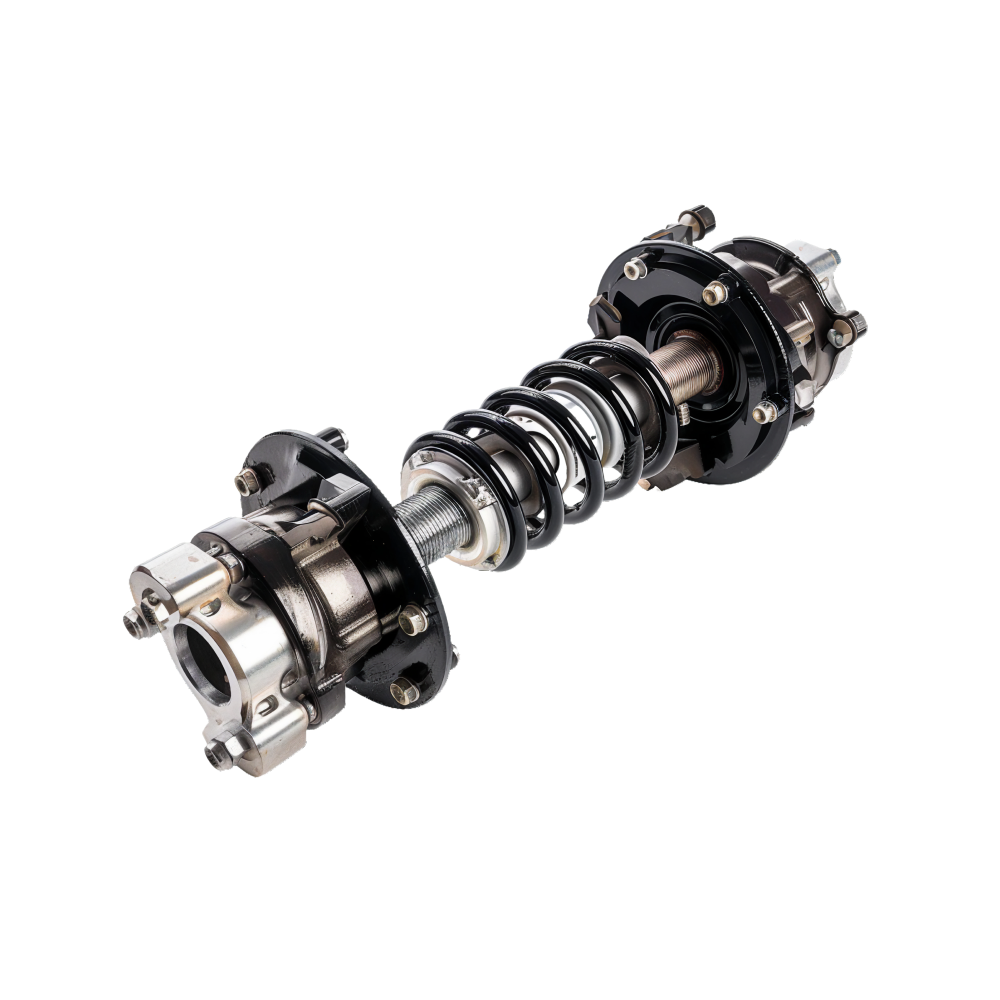Ford Motor Co. is announcing the creation of a new electric vehicle production system and a new EV platform that will allow the automaker to more efficiently bring several lower-cost EVs to market, the first of which will be a midsize, four-door electric pickup that seats five, to launch in 2027.
That pickup, which is expected to start around $30,000, will be assembled at Ford’s Louisville Assembly Plant for U.S. and export markets. The Dearborn-based automaker said it will invest $2 billion to retool the Louisville plant starting later this year.
The plant, which currently builds the Ford Escape and Lincoln Corsair SUVs, employs 2,800 hourly and 200 salaried workers. This midsized electric truck ensures the jobs of 2,200 hourly workers, so about 600 fewer jobs than exist today, said Ford spokesman Mark Truby. He said some of those 600 will take a buyout offer if they are ready to retire, others can transfer to nearby plants such as Kentucky Truck Plant, but there are no plans for layoffs.
Truby indicated that there may be more EVs built at Louisville in the future to grow jobs there.
Ford’s investment in Louisville Assembly is in addition to Ford’s previously announced $3 billion commitment for BlueOval Battery Park in Marshall, Michigan, where Ford will make the prismatic LFP batteries, starting next year, for the midsize electric pickup.
Together, the nearly $5 billion investments mean Ford expects to create or secure nearly 4,000 direct jobs while strengthening the domestic supply chain with dozens of new U.S.-based suppliers.
Ford executives and Kentucky officials also introduced on Monday, Aug. 11, the new Ford Universal EV Production System, which they said will simplify production and ease operations for workers.
Ford leaders also announced the creation of the Ford Universal Electric Vehicle Platform, which will enable the development of “a family of affordable electric vehicles produced at scale.” The vehicles will be software-defined with over-the-air updates to keep improving the vehicles over time.
“We took a radical approach to solve a very hard challenge: Create affordable vehicles that are breakthrough in every way that matters ― design, technology, performance, space and cost of ownership ― and do it with American workers,” Ford CEO Jim Farley said in a statement. “Nobody wants to see another good college try by a Detroit automaker to make an affordable vehicle that ends up with idled plants, layoffs and uncertainty.”
Farley has teased this announcement since Ford’s second-quarter earnings when he said Ford would have a “Model-T moment” on Aug. 11. He’s referring to the classic vehicle that helped turn Ford into a mass market automaker and perfect the assembly line process. At that time, Farley said it was critical that Ford unveil an EV strategy that would position it to make money selling the electric cars and effectively compete against the Chinese, who are known for making high-quality, desirable and affordable EVs.
“So, this has to be a good business,” Farley said of Ford’s investments in the new process and platform. “From Day 1, we knew there was no incremental path to success. We empowered a tiny skunkworks team three time zones away from Detroit. We reinvented the line. And we are on a path to be the first automaker to make prismatic LFP batteries in the U.S. We will not rely on imports.”
Ford’s Skunkworks division is made up of a team of whiz kids in California who are tasked with developing a new EV.
LFP, or lithium iron phosphate, batteries are increasingly being used in EVs, particularly in China because they are known to be safe, have a long lifespan and are cheaper to make.
Farley said the new Universal EV Platform will be efficient. For example, it reduces parts by 20% compared with platforms that support a “typical vehicle” with 25% fewer fasteners, 40% fewer workstations in the plant and a 15% faster assembly time.
Farley said the result will be a midsize pickup EV, sized close to the current Ford Maverick, with a lower cost of ownership over five years than a 3-year-old used Tesla Model Y.
“Take for instance the wiring harness in the new midsize truck; it will be more than 4,000 feet (1.3 kilometers) shorter and 10 kilograms lighter than the one used in our first-gen electric SUV,” Farley said in a statement. “Lithium iron phosphate (LFP) prismatic batteries also enable space and weight savings, while delivering cost reduction and durability for customers. The platform’s cobalt-free and nickel-free LFP battery pack is a structural sub-assembly that also serves as the vehicle’s floor.”
Ford executives said this vehicle, which has been three years in the works, will be profitable within 12 months of launch.
The announcements come after Ford informed suppliers and employees in June that a full-size electric pickup, which is to be the successor to the F-150 Lightning, will be delayed to 2028. Ford plans to make that vehicle at its BlueOval City Assembly Plant in Tennessee. Additionally, Ford is delaying production of its E-transit van, to be built at its Ohio Assembly Plant in Avon Lake, Ohio, from 2026 to 2028.
Ford spokesman Dan Barbossa said Ford will continue to make the F-150 Lightning full-size electric pickup, which is made in Ford’s Rouge Assembly complex in Dearborn. Ford assembles the Mach-E in Mexico and has no plans to move production to the United States to lessen the impact of President Donald Trump’s 25% tariffs on imported vehicles, Kumar Galhotra, COO, told reporters on a media call on Aug. 11.
As for the new midsize EV pickup, Ford did not provide any specifications, including reveal date, starting price (other than it will be about $30,000), EPA-estimated battery range, battery sizes and charge time.
But it said the assembly of the midsize EV pickup is expected to be faster than the Louisville Assembly’s current vehicles because of Ford’s integration between the Universal EV Production System and the Universal Platform.
The midsize EV pickup will have a low center of gravity that improves handling, offers a quiet cabin and ample interior space, according to the company. Farley said the truck is forecast to have more passenger room than the Toyota RAV4, before including the frunk and the truck bed.
The midsize truck will have a targeted zero-to-60 time as fast as a Mustang EcoBoost, which is 4.5 seconds, with more downforce.
“We took inspiration from the Model T ― the universal car that changed the world,” said Doug Field, Ford chief EV, digital and design officer. “We applied first‑principles engineering, pushing to the limits of physics to make it fun to drive and compete on affordability. Our new zonal electric architecture unlocks capabilities the industry has never seen. This isn’t a stripped‑down, old‑school vehicle.”
Ford is also transforming the traditional assembly line into an “assembly tree.” That means instead of one long conveyor, there will be three sub-assemblies that run down their own lines simultaneously and then join together.
Ford said a large single-piece aluminum unicasting replaces dozens of smaller parts, enabling the front and rear of the vehicle to be assembled separately. The front and rear are then combined with the third subassembly, the structural battery, which is independently assembled with seats, consoles and carpeting, to form the vehicle.
Farley said the parts will travel down the assembly tree to operators in a kit, which will included fasteners, scanners and power tools to do the job all in the correct orientation for use to avoid mistakes.
Ford said this Universal EV Production System will also dramatically improve ergonomics for employees by reducing twisting, reaching and bending.“We put our employees at the center and re-created the factory from scratch,” Bryce Currie, Ford vice president of Americas Manufacturing, said in a statement. “We expect ergonomic breakthroughs and complexity reduction ― through elimination of parts, connectors and wire ― will flow through to significant quality and cost wins.”
Farley said the $2 billion investment in Louisville Assembly Plant for upgrades to assemble the midsize electric truck will secure 2,200 hourly jobs. Farley said the project is supported by an incentive offer from the Kentucky Economic Development Finance Authority.
More: How long can Ford and carmakers hold off on bigger price hikes due to tariffs?
More: Ford further pushes out production of 2 EVs to focus on affordability
Olivia Evans contributed to this article.
Jamie L. LaReau is the senior autos writer who covers Ford Motor Co. for the Detroit Free Press. Contact Jamie at jlareau@freepress.com. Follow her on Twitter @jlareauan. To sign up for our autos newsletter. Become a subscriber.
This story has been updated to add video.

